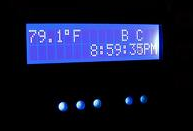 Laminar Streamer Q&A, NYC, More PressTuesday 07 February, 2012
Hi,
I'd like to address several questions which have been asked regarding the pending Laminar Streamer. I'll also announce our participation at the NYC Show this April, as well as four upcoming reviews of our high performance products. I think the best way to present additional info about the Laminar Streamer is in the form of a Questions and Answers session. You will notice that I use quite a few analogies with water. Water not in the "wet reverb" sense of the word (used in sound recording studios in contrast to "dry audio," meaning no reverb at all), but more in the sense of laminar flow. Laminar flow is the opposite of turbulent flow. With laminar flow, you can have great speed of movement but with no noise. Noise comes from turbulence when speaking of any liquid's movement. Turbulence substantially raises friction of the liquid's flow. This analogy is great when applied to a digital stream. After reading the following, it should not come to a surprise to you that I enjoy fishing and boating. :) Laminar Streamer update in Q&A form Q: I wonder how the music files are to be displayed, i.e. I am currently using software with Windows as a GUI. Will you be providing some form of comparable interface for titles, album cover art, etc.? Short A: Yes. Later, a future stand-alone device, either made by us or available from a third party generic manufacturer, will hook up to the Laminar Streamer via the provided port. The world of remote control is quickly changing, and any device's integration with control over iPads and iPhones is a new reality, which will be here to stay. They say that if you want the rainbow, you have to be willing to put up with the rain. And, since rain comes from The Cloud, LessLoss will be friendly with the Cloud for remote control purposes. But not for streaming. Why? This requires a longer answer, which follows. Loooong A: As always, if you want a real answer, we can't avoid inclusion of the bigger picture. First, it is imperative to understand the level of quality we are aiming at with the Laminar Streamer. Everything we add to the pure and simple act of streaming the digital data with a completely dedicated operating system and clock timer, will add some amount of Jitter to the stream. That is the foundation we start with. The rowboat rides the laminar stream without eddies until you insert the paddle into the water.
At this level, even the addition of such a simple two-line liquid crystal display (pictured above) will add some amount of Jitter. This is a far cry electronically from a full-fledged color screen which displays a mouse pointer, color graphics of album covers, and even animations, (not to mention your email inbox, etc.). Even this LCD adds some Jitter. So if you want to add a whole graphics interface with accompanying control software, you have now set the stage for much more substantial amounts of Jitter. If we were at first complaining about the precariousness of dipping the paddle into the water, well, you are now revving up the motor. You are degrading the solution (in this aspect) to the level of audio performance of a colorful iPad, iPhone, or other such visually tantalizing but audibly inferior solution. Oh, with such a motor, you will be fast to reach the shore, you will be first to find the music track in question, but in the meantime, you will have scared all the fish away, even the less sensitive ones, and should I mention that the gentle rustling of the stream will thus recede into oblivion. Something will be gained (speed of use = "water skiing") and something will be lost (audio quality = "sounds of nature"). And I don't believe LessLoss is ready to change its name just now. In keeping with our philosophy of audio purity (by knowing how to get there), we therefore will include a function so that the user could opt to turn off the screen and all of its associated electronics altogether, as desired, when desired. This is like turning everything off in a submarine. The control screen for navigation purposes will be included in the device itself and will provide folder and file name info, info about sampling rates, play mode, etc. Navigation of the screen will be done by pressing buttons directly on the Laminar Streamer device. But if you want, even during playback, you can always revert to Pure Laminar mode. As such, the Laminar Streamer represents audio purity from digital files like never before. We want to maintain this purity at every twist and turn of the way into additional realms of functionality, such as the one which I will present to you now. What not to do Over the years, countless tests, either by LessLoss, or by those found documented in the worldwide computer audio forums, have made it widely known that turning off Wi-Fi and Bluetooth functionality, unplugging Network cables, and all other isolation methods used in high end computer audio, inevitably result in better sound. The reason is that it lowers Jitter content by making the operating environment that much "cleaner" from an electromagnetic radiation point of view, and by alleviating the processor and operating system from the need to share the clock's timer with any of these non-audio related functions. Such peripheral operations introduce Jitter every time. If we want to include remote control over Bluetooth, IR, Wi-Fi, or Ethernet, and if for this purpose we want to use our handy smart phones and electronic notepads, we will, with one sweeping blow, wreck the pristine conditions which we have worked so hard to build for our pure audio streamer to flow in. At best it will sound like an upgraded iPhone. At worst it will sound, well, like an iPhone. Our Solution We will therefore create an input port into the Laminar Streamer which will allow remote control functionality from a separate, dedicated device, which will exclusively contain all of the "dirty" computer functionality associated with radio frequency transmission and reception, IR processing, and frequent Network communications. The connecting umbilical cable between this "busy computer radio station" and the serene sanctitude of the Laminar Streamer represents a serious threat to our goals. Therefore, we will provide galvanic (meaning no wires) separation between those polluted incoming control wires and the Laminar Streamer itself. This will be achieved via optics. In our solution, light itself will be controlling the Laminar streamer's control functions, not an antenna connected directly to a beehive of dangerous radio. In this way, through galvanic separation, one will be free to enjoy all of the modern-day animations, album covers, posters, and other web content desired, while at the same time gaining control, from a distance, of the innocent simplicity and audio purity of the Laminar Streamer, which is needed. We will make every effort such that the transition from the digital cookie-cutter, number-crunching, non-real-time, "polluted" realm of the networked remote control unit into the liquid, flowing, more sensitive realm of the Laminar Streamer be bridged indeed masterfully. We believe it will be a recipe all of your senses will enjoy. Q: How will the files be put into the Laminar Streamer? A: Only by hand. Exclusively. You will have to push the SD card with your index finger into the slot until you hear a little click. That little click will indicate to you that the files are finally in a good, good place. Q: What will the Laminar Streamer cost? A: We don't know, yet. Someone once said: any price is too low. We disagree. Q: What about bugs? Or future expansion of your operating system to include new features? Will I have to send my Laminar Streamer in to get the latest and greatest? A: No. You will download the newest operating system from "a secure server in the cloud" to an SD card on your computer. You will insert the SD card into the streamer, and, as you come back to your listening room with your tea, you will have the latest and greatest. We might update this system 10 times. So, ten cups of tea later, you will still have the latest and greatest. (We take our tea with lemon, please.) Q: I don't have an SD card slot on my computer! A: Get a USB to SD card adapter for $13. (By the time you read this it could well be $11.) Q: What about viruses? Is it a safe system? A: It is impossible for a virus to be written for an operating system which is unknown to the virus author. The virus authors are busy studying Windows, and, to a lesser extent, MAC OS. Our system is probably even more simple than most viruses. Maybe the virus itself would die by being inserted. If not, it will certainly die of boredom. Q: In my system, I circumvent S/PDIF altogether. Can I do this with the Laminar Streamer? A: Yes. We will include I^2S output. This, in addition to a S/PDIF output on RCA, as well as a S/PDIF output on XLR balanced adhering to the AES/EBU standard. Q: How will the Laminar Streamer look? A: We're still drawing it. Dreaming it. Refining it. We don't like ugly gear.  April 13-15, New York City Audio Show We'll be at the New York Audio Show in New York City's Waldorf Astoria hotel. We'll be in Sutton Suite. Also in our showroom will be Kaiser loudspeakers from Germany (excellent Panzerholz speakers with exquisite parts), as well as Beyond Frontiers Audio featuring hybrid amplification from Serbia (excellent engineering and great craftsmanship). We plan on showing the Laminar Streamer. But not only. We'll set up a great sounding system. BYOB. (When I provide, people seem to get goofy.) 4 upcoming reviews (1) Stereo Times, in just a week or so, featuring three reviewers providing independent commentary on the Blackbody ambient field conditioner in a variety of systems. (2) The Audio Beat, featuring the Tunnelbridge distortionless interconnect system and Firewall. Review is pending. (3) AVShowrooms, in an upcoming edition, will be showing their video review of a whole set of LessLoss cables, amongst them, the Tunnelbridge distortionless interconnect system. (4) Mono and Stereo has already released an intro preview to their review of the LessLoss Firewall. Learn how the Firewall came knocking down the doors of perception. Have a nice day! Louis Motek | LessLoss.com DFPC Power Cables Firewall Power Conditioner Blackbody Ambient Field Conditioner Anchorwave Interconnect and Speaker Cable Tunnelbridge Distortionless Interconnect System DAC 2004 MkII Hybrid Power Supply D/A Converter Laminar Streamer Beta SD Player (Coming soon!) |
- Products
- Power Cables
-
 C-MARC™ Prime
The must have foundation for any sound system today.
From
$
486
C-MARC™ Prime
The must have foundation for any sound system today.
From
$
486
-
 C-MARC™ Classic
The unique super-cable power cord everyone's talking about.
From
$
1148
C-MARC™ Classic
The unique super-cable power cord everyone's talking about.
From
$
1148
-
 C-MARC™ Classic Entropic Process
The peerless, advanced Classic masterpiece.
From
$
1934
C-MARC™ Classic Entropic Process
The peerless, advanced Classic masterpiece.
From
$
1934
-
 C-MARC™ Stellar Entropic Process
The crown jewel for highest performance power connection.
From
$
2450
C-MARC™ Stellar Entropic Process
The crown jewel for highest performance power connection.
From
$
2450
-
- Loudspeaker Cables
- Interconnect Cables
-
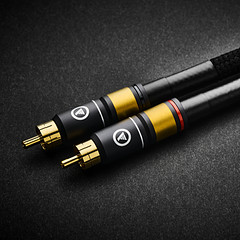 RCA C-MARC™
Cotton-clad true Litz • Whopping 2.3mm2 polarities
From
$
850
RCA C-MARC™
Cotton-clad true Litz • Whopping 2.3mm2 polarities
From
$
850
-
 RCA C-MARC™ Entropic Process
Our finest RCA cable • Polished Wenge barrels
From
$
1428
RCA C-MARC™ Entropic Process
Our finest RCA cable • Polished Wenge barrels
From
$
1428
-
 XLR C-MARC™
A hand-braided cotton-clad unique Litz construction
From
$
950
XLR C-MARC™
A hand-braided cotton-clad unique Litz construction
From
$
950
-
 XLR C-MARC™ Entropic Process
Stratospheric performance for the audio connoisseur
From
$
1615
XLR C-MARC™ Entropic Process
Stratospheric performance for the audio connoisseur
From
$
1615
-
- Digital Cables
-
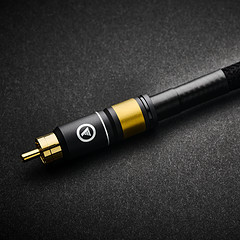 RCA Digital C-MARC™
Cotton-clad unique Litz design • Made only by LessLoss
From
$
510
RCA Digital C-MARC™
Cotton-clad unique Litz design • Made only by LessLoss
From
$
510
-
 RCA Digital C-MARC™ Entropic Process
Possibly the most subtle digital cable on the planet
From
$
858
RCA Digital C-MARC™ Entropic Process
Possibly the most subtle digital cable on the planet
From
$
858
-
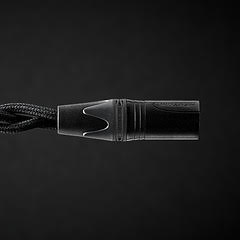 XLR Digital C-MARC™
Featuring a whopping 3 x 2.3mm2 Litz construction
From
$
570
XLR Digital C-MARC™
Featuring a whopping 3 x 2.3mm2 Litz construction
From
$
570
-
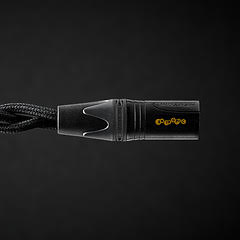 XLR Digital C-MARC™ Entropic Process
Stratospheric performance for the audio connoisseur
From
$
969
XLR Digital C-MARC™ Entropic Process
Stratospheric performance for the audio connoisseur
From
$
969
-
- Grounding Cables
- Bulk Wire and Cable
- Signal Conditioners
-
 Firewall for Loudspeakers
Firewall for Loudspeakers
C-MARC™ Plug-and-Play Speaker signal conditioning like you've never imagined From $ 1656 -
 Firewall for Loudspeakers
Firewall for Loudspeakers
DIY version for Self-Installation For the Do-It-Yourself project enthusiast • Solder yourself From $ 800 -
 BlackGround DIY
Voltage-ground interface for a variety of applications
From
$
446
BlackGround DIY
Voltage-ground interface for a variety of applications
From
$
446
-
 BlackGround 8x/10x Speaker Base
Plug-and-play loudspeaker signal conditioner
From
$
3096
BlackGround 8x/10x Speaker Base
Plug-and-play loudspeaker signal conditioner
From
$
3096
-
- Power Conditioners
-
 Firewall 640x
Plug-and-play solution for any powered gear
Firewall 640x
Plug-and-play solution for any powered gear
C-MARC™ Entropic Process and standard lead versions From $ 654 -
 Firewall 640x DIY for Self-Installation
Self-solder and save!
From
$
320
Firewall 640x DIY for Self-Installation
Self-solder and save!
From
$
320
-
 BlackGround DIY
Voltage-ground interface for a variety of applications
From
$
446
BlackGround DIY
Voltage-ground interface for a variety of applications
From
$
446
-
 BlackGround 6x/10x Power Base
Plug-and-play power conditioner
From
$
2350
BlackGround 6x/10x Power Base
Plug-and-play power conditioner
From
$
2350
-
- Power Distributors
- Equipment Feet
- Field Conditioner
- DACs
- Power Cables
- Reviews
- This is definitely the cable to go for. It will almost literally blow your mind. – March 2012, Puresound Magazine
-
I was intrigued by the unanimously positive reviews garnered by these products ...
– by user Raymond Eye
Leaves you speechless
Sensational cables
BEST purchase I've made
Top notch performance
It's a steal
Musical... liquid... 3D
It's not subtle
More than an upgrade
Best I've heard so far
Stellar service
Sounds like a new system
Much more lifelike
Emotional flow
Overwhelming results
More dimensional
Sound is transformative
We were all astounded
Transformed my listening
Sounds so cohesive
Emotionally engaging
- Where to Start
- Free Newsletter
- Newsletter Archive
- B-Stock Alerts
- Shopping Tools
-
Shipping
- Free Shipping Learn about our international shipping policy
-
Return Options
Our satisfaction guarantee
and return policy -
Customs / Tax
UPS expedites local
customs clearance
-
Transaction
- Conditions of Sale Agreement for a smooth business transaction
- Privacy Policy We pledge to keep your information private
-
Terms of Use
Business policies
and agreements
-
Account
-
- Contact Us
-
Meet the Designers
-
- Care to share of your personal experience with our products? We'd be happy to post it!
- Want to learn more about our activities? Our Newsletter is both free and spam-free.
hi-res photos, brochures
logos, press releases, and
print-friendly PDF downloads. -
Contact Us
Connect with Us
-
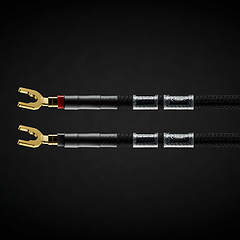


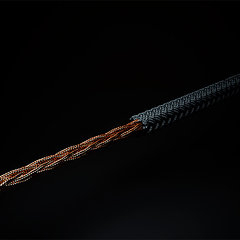








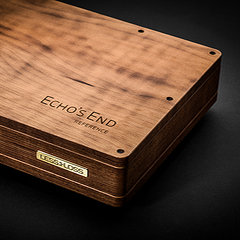

 Beware of Fakes
Beware of Fakes

